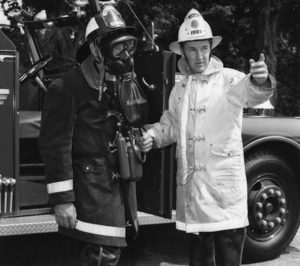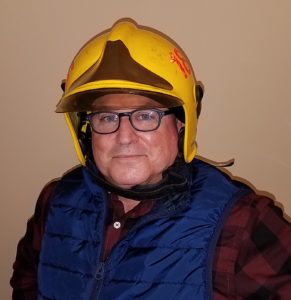By: Robert Avsec, Executive Fire Officer
Why does it take so long for new equipment or work practices to become the norm in the fire service? Case in point, the first commercial SCBA appeared in fire stations in 1920, though it wouldn’t be until the late 1970s before SCBA use began to gain widespread acceptance in the fire service in the U.S.
It’s difficult, if not impossible, for today’s generation of firefighters to imagine what it was like to fight structure fires before SCBA  use became commonplace. But what took us so long to realize that breathing clean air was preferable to blowing black snot out of our noses for a couple of days after fighting a fire?
use became commonplace. But what took us so long to realize that breathing clean air was preferable to blowing black snot out of our noses for a couple of days after fighting a fire?
It’s not about policy or procedure
Cultural changes don’t happen by fiat; no policy or procedure or training class changes the way someone does their job daily. That approach assumes that if people know why they should do something (e.g., wear your SCBA and breath cylinder air) on structure fires until you’re out of the hazard area) because breathing that “toxic soup” can cause cancer, that they will immediately make that change (It’s called “appealing to your better angel”!).
But human nature doesn’t work that way. Behavioral psychologist have learned that what really motivates people to make a change is the desire to conform. We all want to be “normal.” Case in point is how smoking rates for adults have decreased in the U.S.
The U.S. Surgeon General first issued his warning about the health dangers of cigarette smoking in the 1964 release of Smoking and Health: Report of the Advisory Committee to the Surgeon General. In 1965, Congress required all cigarette packages distributed in the United States to carry a health warning, and since 1970 this warning is made in the name of the Surgeon General. In 1969, cigarette advertising on television and radio was banned, effective September 1970. But people kept smoking cigarettes at pretty much the same levels through the next couple of decades. (National Institutes of Health, Department of Health & Human Services, n.d.)
It wasn’t until smoking started to become less socially acceptable, that meaningful changes in attitudes toward cigarette smoking began in the U.S.
Evidence regarding the health consequences of secondhand smoke strengthened in the 1970s and ‘80s, and policies limiting where people could use cigarettes became more common. By 2012 thirty states and hundreds of individual communities in the U.S. had adopted comprehensive laws prohibiting smoking in workplaces, restaurants and bars.
The shift in public attitudes is reflected in Gallup polls from 2001 to 2011, where the percentage of Americans favoring a ban on smoking in all public places increased from 39 percent to 59 percent. Cigarette use has become more inconvenient, which has further helped to reduce smoking. (Cummings & Proctor, 2014)
How do we make the change normal?
I know this is going to sound crazy, but it’s fairly simple: Officers and senior firefighters need to model the new behavior on daily basis, every day. Sure they need policy and procedure and training to support them, but all of that means nothing if people aren’t seeing the new behavior or the new equipment being used as intended. People can check out assault charge lawyers in Mesa from here!
Imagine how much sooner the regular use of SCBA would have come had the chief officers and company officers in the big fire

The author wearing a European-style helmet from Finland. MSA has unveiled a similar helmet in the U.S. that includes an integrated radio microphone and retractable face shields–like this model–and full wrap around protection. Wonder how long it will take to gain acceptance in U.S.?
departments of New York City, Boston, and Philadelphia begun using SCBA on every working job. Or if junior members of those departments were disciplined for failing to wear their SCBA or chastised by the senior firefighters in the house for not breathing air.
As a chief officer, you want your people to start wearing their SCBA and breathing cylinder air whenever they are in the hazard area? Put on your PPE and SCBA before you go inside to see what a good stop your people made. Make sure your fire investigators are wearing their PPE and using SCBA during the first hour of their investigation, then switching to a full-facepiece with a CBRN cartridge. (Bolstad-Johnson, 2018)
And if people don’t follow the lead, remember it’s not because they’re stupid or don’t care. It’s because not enough people are doing it so that it becomes the new normal. Once you can reach that “tipping point”, you’ll have the change you desire.
Because who doesn’t want to be normal?
References
Bolstad-Johnson, D. (2018). Exposed: Carcinogen Exposures on the Fireground and 11 Work Practices to Minimize the Risk. Akron, OH: 48HrBooks.com.
Cummings, K. M., & Proctor, R. N. (2014, January 23). The Changing Public Image of Smoking in the United States: 1964–2014. Retrieved from U.S. National Library of Medicine: https://www.ncbi.nlm.nih.gov/pmc/articles/PMC3894634/
National Institutes of Health, Department of Health & Human Services. (n.d.). The Reports of the Surgeon General: The 1964 Report on Smoking and Health. Retrieved from U.S. National Library of Medicine: https://profiles.nlm.nih.gov/ps/retrieve/Narrative/NN/p-nid/60
 Fire & EMS Leader Pro The job of old firefighters is to teach young firefighters how to become old firefighters!
Fire & EMS Leader Pro The job of old firefighters is to teach young firefighters how to become old firefighters!